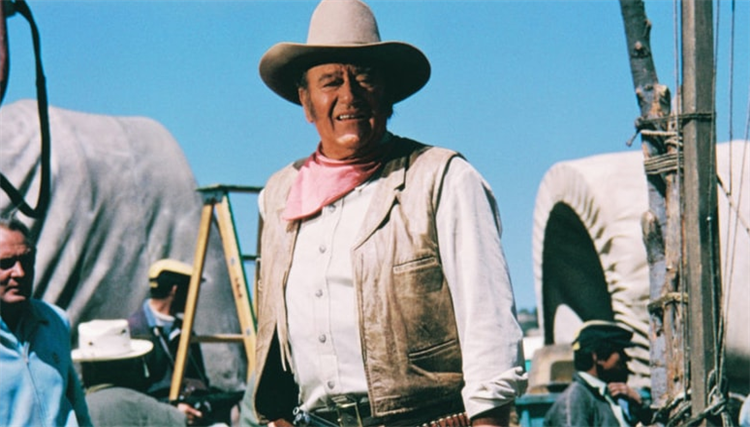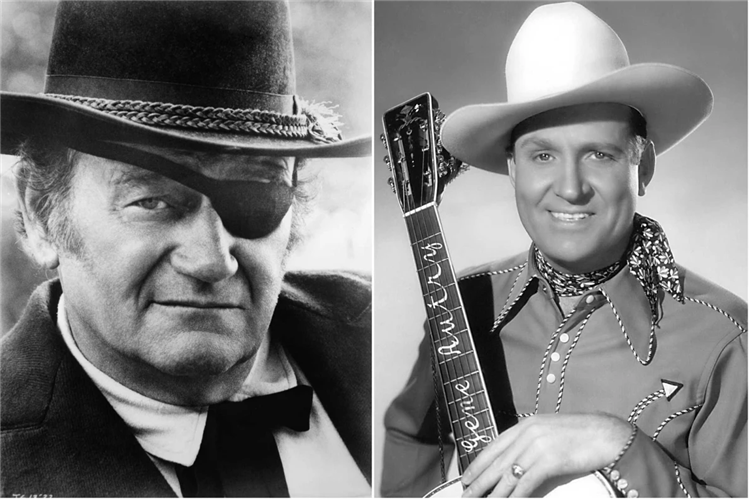John Wayne was a gun-slinging, villain fighting character in his westerns, yet he was also known as the singing cowboy at one point.
Before becoming Hollywood’s most beloved American cowboy, John Wayne took on few roles in B-Western films as a way to break onto the western scene in the industry— even if those roles required him to sing. In the 1930s, Wayne appeared in one of the singing cowboy films, beginning with 1933’s Riders of Destiny.

At just 26-years-old, Wayne played the role of Singin’ Sandy Saunders and followed the father of the singing cowboys, Ken Maynard. The western acted as the first of 16 Lone Star Westerns Wayne made for Monogram Pictures between 1933-1935. It’s also marked the first time Wayne worked with director Robert N. Bradbury and character actor George “Gabby” Hayes.
John Wayne Books Singing Parts in Early Career
Although it was a singing role, in reality, viewers didn’t get to hear Wayne’s singing voice. Instead, what you hear is an overdub of Bill Bradbury, the director’s son and the brother of another Western movie star, Bob Steele.
Two years later, Wayne booked another singing cowboy character: John Middleton (also billed as John Allen) in Republic Pictures’ Lawless Range. Again, you don’t hear John Wayne’s singing voice. Unbeknownst to fans, you hear a former real-life Texas cowboy named Glenn Strange singing Wayne’s parts.

Wayne also has dubbed-over “singing” scenes in B-movies westerns such as Man From Utah (1934) and Westward Ho (1935), with either Bradbury or co-star Jack Kirk singing.
However, as Wayne garnered more notoriety and fame, he started singing in films. Viewers can hear Wayne’s real singing voice during a duet with Oliver Hardy in The Fighting Kentuckian from 1949. Viewers can also hear it during his performance of “Titwillow” in the box office smash hit, The Shootist in 1976.
Years later, during an appearance on “The Dean Martin Show,” Wayne recalled his early role as Singin’ Sandy.
“During the early days, I wasn’t known just as a fighter and a gunslinger. I was once known as Singing Sandy,” he began. “It was back in the ’30s. I was playing a cowboy. The director thought it might be a good idea if every time I got mad, I’d start to hum. Well, it caught on, and the next picture I did four songs and played a guitar. I’ll have to confess, there was three of us. There was me, there was the fellow that dubbed my voice, and there was the fellow playing the guitar.”
